UHD-DIGISUPER 51 and 7×10.7 KAS S Lenses Provide Cutting Edge Imagery Solutions for Sports and Event Production
MELVILLE, NY, November 6, 2019 – Canon U.S.A., Inc., a leader in digital imaging solutions, today announced the launch of its first two 8K Broadcast lenses: the UHD-DIGISUPER 51 (SP51x15.5B), a long-zoom field lens, and the 7×10.7 KAS S, a portable zoom lens. These two new zoom lenses are compatible with 8K broadcast cameras equipped with 1.25-inch sensors.
“8K broadcasting equipment is the newest frontier for covering sporting events and documentary productions around the globe,” said Kazuto Ogawa, president and chief operating officer, Canon U.S.A., Inc. “Through the addition of our first 8K broadcast lenses, Canon is cementing our position on the cutting edge of the latest ultra-high-resolution digital imaging solutions.”
UHD-DIGISUPER 51 8K Lens
The UHD-DIGISUPER 51 8K field zoom lens provides high-quality optical performance for 8K broadcast cameras from the center to the periphery of the screen. The lens is built with the world's highest1 51x zoom, as well as the world's longest1 focal range from the wide-angle end of 15.5mm to the telephoto end of 790mm. In addition, the lens also features a built-in 1.5x extender that increases the maximum focal length to 1185mm. With the ability to realize high magnification, this lens provides users with the same operability as a conventional 2/3-inch HDTV or 4K field zoom lens, allowing them to switch to 8K video shooting and production without changing the shooting style.
7×10.7 KAS S 8K Lens
Featuring a 7x zoom that covers a focal range of 10.7-75mm, the new 7×10.7 KAS S is ideal for a variety of broadcasting applications. From the center of the screen to the corners of the periphery, this lens has the resolution and contrast compatible with 8K broadcast cameras, while also having the same operability as a conventional 2/3-inch HDTV or 4K portable zoom lens. The 7×10.7 KAS S is equipped with key features designed to provide customers with a high-quality, user-friendly experience, including the mobility required for on-the-move shooting.
1.25-Inch Image Format Size for 8K UHD Live Television
The early experimental 8K UHD live television coverages of sporting events proved critical to determining the image format size that could deliver the essential depth of field while also ensuring an individual image sensor photosite size that could sustain 8K MTF, adequate dynamic range, and luma signal to noise.
A 1.25-inch image format size balances those imaging parameters in tri-sensor cameras for 8K UHD live television. The 1.25-inch image format has a diagonal of 18.5mm as compared to the smaller 11.0mm of the 2/3-inch format and the larger 28.2mm of the Super 35mm format.
The 7×10.7 KAS S will be available by special order beginning in January 2020, and the UHD-DIGISUPER 51 will be available by special order beginning in May 2020. For interest or inquiry about either lens please contact your local Canon representative. To learn more about Canon broadcast lenses, please visit www.usa.canon.com.

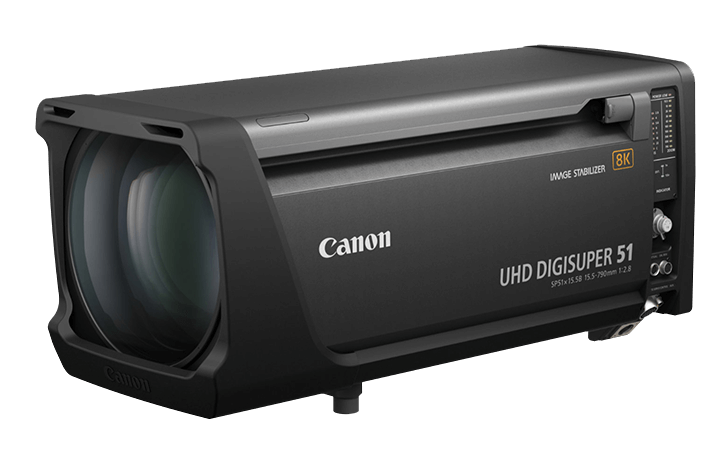
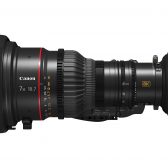

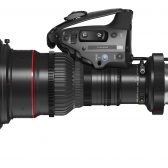
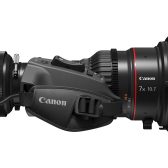
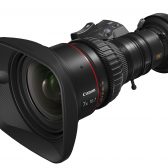
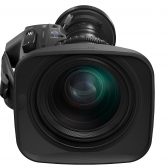
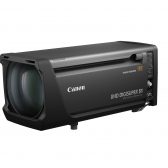
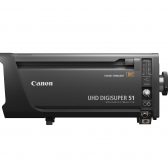
Video showing setup of a typical Sony “hard” camera with canon lens use in sporting events. 2008 was a very exciting time when 2/3” sensor was considered “large” sensor and 5DII changed the way Indi films (and Hollywood) were made
Another video ... the operation
I have a 5Dmk3. Last time I shot video was my niece's birthday on 2012. Shot it FHD, and nobody complained. As my computer screen's highest resolution is 1920x1200. I don't have a TV. I shoot family events, and send photos @ 3MP. That's the comfort zone of having no complaints about long download times, or not having enough pixels for 18x24cm prints. They've learned to ask for full resolution photos on the rare occasion they want to print larger.
But yes, we (read: all of us) need 4K. Every vlogger, and every last photographer.
Sure.
isnt anyone paying attention to the angle of resolution a person can actually see? I suppose not, as Tv sales continue to drop, manufacturers continue to increase unneeded resolution, when studies have clearly shown that people prefer 1080p with wide band color to 4K with sRGB. And while color standards are DCI-P3 for 4K as opposed to sRGB for 1080p, most 4K sets can’t do more than sRGB.
Yes, some might find it handy. As in a lot of photographers do not need 4K.
How hard was that to understand?
I also hate all of the remotes, none of them are easy for me to use with the loss of feeling and control in my fingers..
The Amazon Fire TV remote seems to be fairly good, but has limited functions, and voice control is not there yet. There are some remotes I have not tried, it seems to be difficult to be able to try out a remote when looking at a TV set, they are all locked away.
As far as 4K is concerned, what I see is better contrast which makes the image appear much clearer. It really does not make any difference to me as to 4K or 2K, but a clearer image and better color depth and contrast do make a big difference, and right now, there is no choice, all the new ones are 4K, even the $300 55 inch LG models I've seen at Costco are 4K, its no longer a selling point, its just standard, even my Fire TV streaming device is 4K. My internet is too slow to do more than one 4K user, and not fast enough for 8K, so I'm likely getting lower resolution in many cases. Live sports seem best.